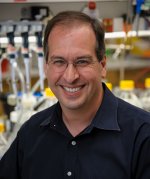Droplets, Droplets Everywhere…Cell Organization by Liquid–Liquid Phase Separation
to

Michael K. Rosen, Ph.D.
Professor and Chair
Mar Nell and F. Andrew Bell Distinguished Chair in Biochemistry
UT Southwestern Medical Center
Dr. Rosen is chair of the Department of Biophysics at UT Southwestern Medical Center, a Howard Hughes Medical Institute Investigator, and member of the National Academy of Sciences. The focus of his research is to understand how cells stay organized. This entails the study of enigmatic compartments within a cell, called biomolecular condensates, which concentrate proteins and nucleic acids without a surrounding membrane. The Rosen lab seeks to understand the formation, regulation and functions of enigmatic, cellular compartments termed biomolecular condensates. These evolutionarily conserved structures concentrate diverse but specific groups of molecules without a surrounding membrane. Condensates appear to form through the physical process of liquid-liquid phase separation. Using a range of techniques, including biochemical reconstitution and in vitro and cellular microsopies, we investigate phase separation in both engineered and natural condensates. The former, in their simplified nature, enable precise isolation of key molecular parameters governing condensate behaviors, revealing general principles. The latter allow demonstration of these principles in more complex natural biochemical and cellular systems. Ultimately, we seek to understand cell organization on scales spanning nanometers to microns.
Summary
Biomolecular condensates are two- and three-dimensional compartments in eukaryotic cells that concentrate specific collections of proteins and nucleic acids without an encapsulating membrane. Many condensates behave as dynamic liquids and are believed to form through liquid-liquid phase separation (LLPS) driven by interactions between multivalent constituents. While we understand much about the physical mechanisms that promote and regulate LLPS, we know less about the biochemical functions that arise from this process, and many roles of LLPS in biology remain to be discovered. In my talk I will explain how my lab began our work on biological LLPS, and then discuss how assembly of two distinct signaling cascades into condensates causes modulation of their biochemical activities. Finally, I will discuss a new direction in the lab focused on understanding how chromatin may be organized by LLPS, and dynamically regulated by various remodeling machineries. These behaviors may contribute to formation of functionally distinct compartments in the eukaryotic nucleus, which are important to processes that include gene regulation and DNA repair.
This page was last updated on Thursday, May 19, 2022